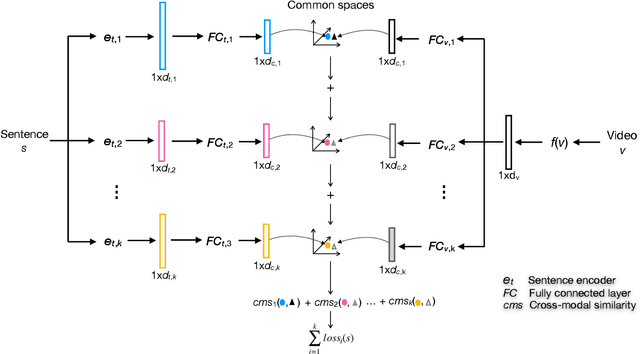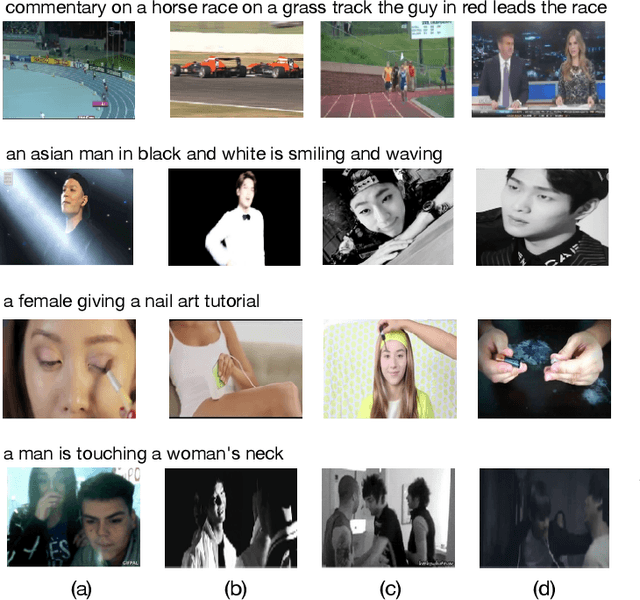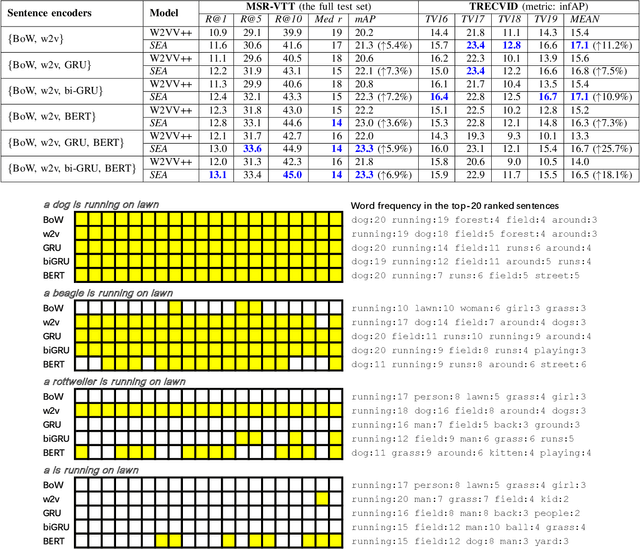SEA: Sentence Encoder Assembly for Video Retrieval by Textual Queries
Paper and Code
Nov 24, 2020



Retrieving unlabeled videos by textual queries, known as Ad-hoc Video Search (AVS), is a core theme in multimedia data management and retrieval. The success of AVS counts on cross-modal representation learning that encodes both query sentences and videos into common spaces for semantic similarity computation. Inspired by the initial success of previously few works in combining multiple sentence encoders, this paper takes a step forward by developing a new and general method for effectively exploiting diverse sentence encoders. The novelty of the proposed method, which we term Sentence Encoder Assembly (SEA), is two-fold. First, different from prior art that use only a single common space, SEA supports text-video matching in multiple encoder-specific common spaces. Such a property prevents the matching from being dominated by a specific encoder that produces an encoding vector much longer than other encoders. Second, in order to explore complementarities among the individual common spaces, we propose multi-space multi-loss learning. As extensive experiments on four benchmarks (MSR-VTT, TRECVID AVS 2016-2019, TGIF and MSVD) show, SEA surpasses the state-of-the-art. In addition, SEA is extremely ease to implement. All this makes SEA an appealing solution for AVS and promising for continuously advancing the task by harvesting new sentence encoders.
 Add to Chrome
Add to Chrome Add to Firefox
Add to Firefox Add to Edge
Add to Edge